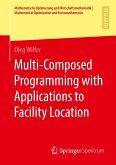Facility location applications are concerned with the location of one or more facilities in a way that optimizes a certain objective such as mini mizing transportation cost, providing equitable service to customers, cap turing the largest market share, etc. Facility location problems give rise to challenging geometrical and combinatorial problems. The research on facility location problems spans many research fields such as operations re search/management science, industrial engineering, geography, economics, computer science, mathematics, marketing, electrical engineering, urban planning, and related fields. Applications to facility location models abound. Location of warehouses, plants, hospitals, retail outlets are classical examples. Applications are also found in the location of electronical components, warning sirens, sprinklers, radar beams, exploratory oil wells. These are less obvious "facilities". One should consider applying a location model to any scenario that involves finding a best location (or locations) for any object(s). This book Facility Location: A Survey of Applications and Methods pro vides a state of the art review along with references to important contem porary topics in locational analysis. The book includes twenty chapters divided into four parts, each dealing with a different aspect of location modeling and implementation. The book concludes with over 1,200 refer ences. The first part Methodology and Analysis consists of a survey of method ological and technical aspects of location analysis. Issues such as estimating distances, the error introduced by assuming discrete demand rather than continuous one, global optimization techniques, inference of weights, con jugate duality, and using Voronoi diagrams are reviewed.









